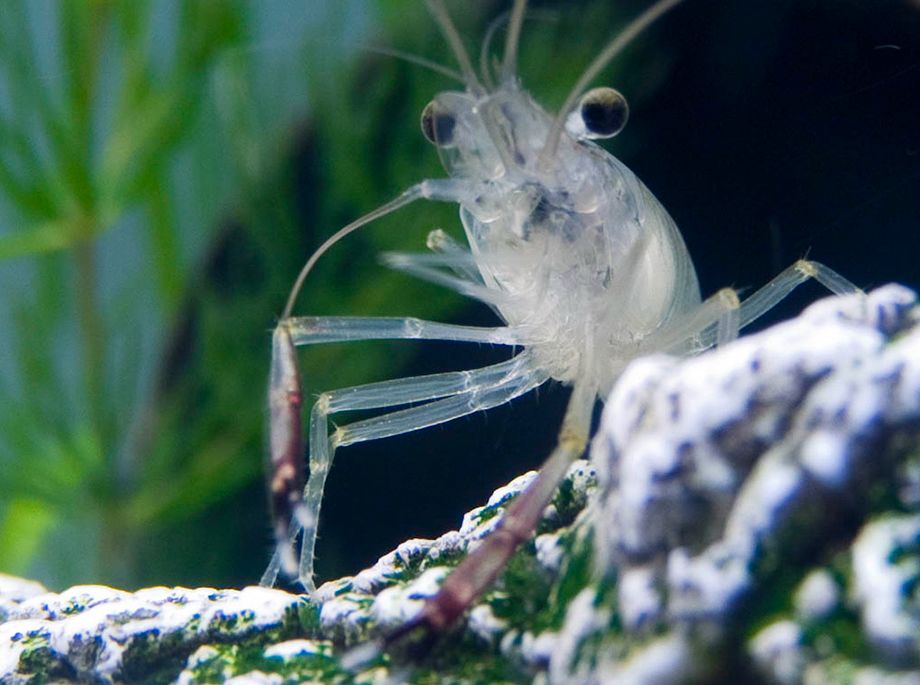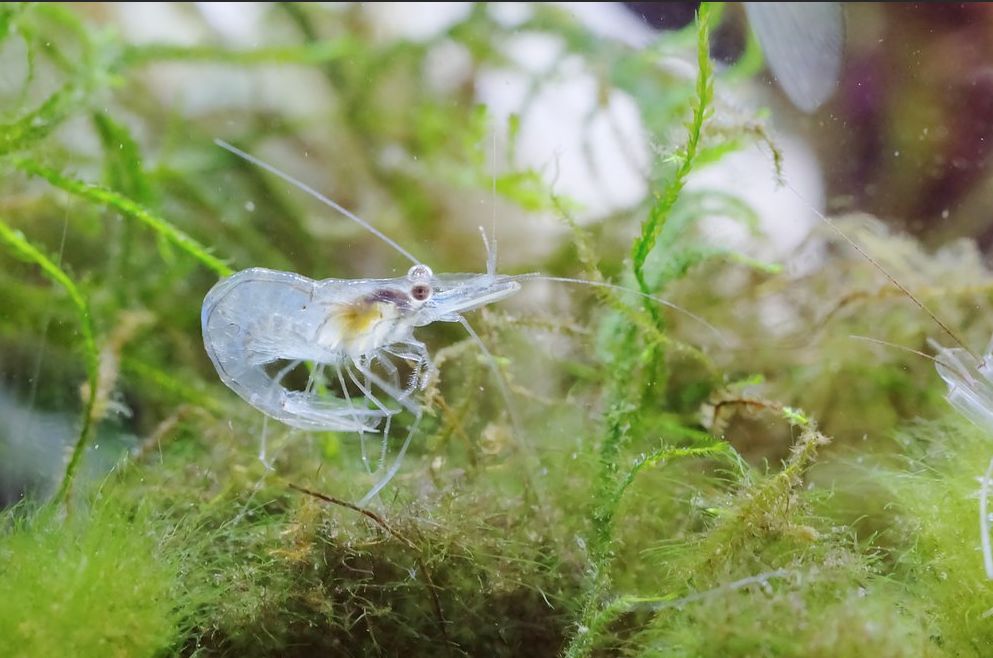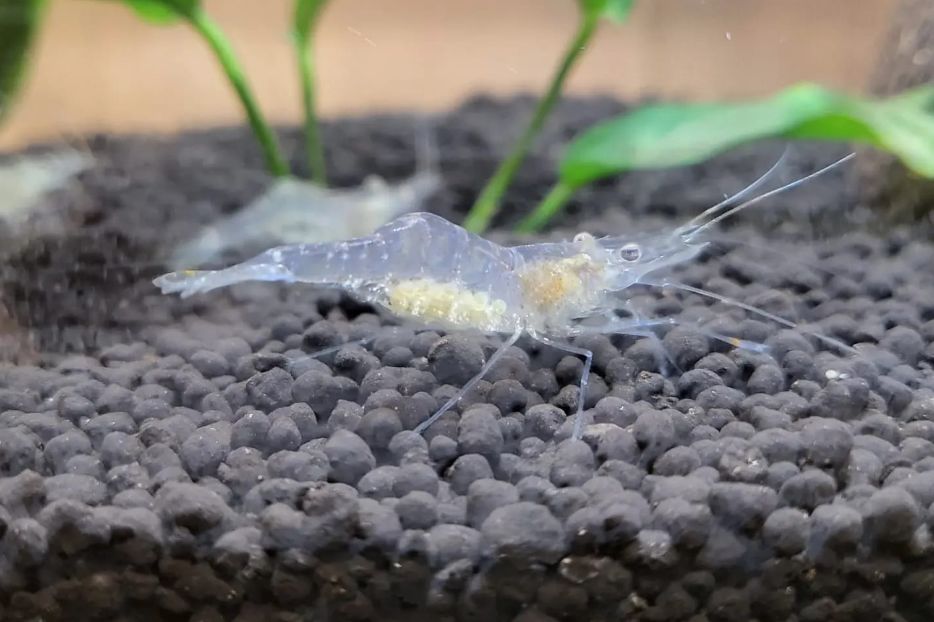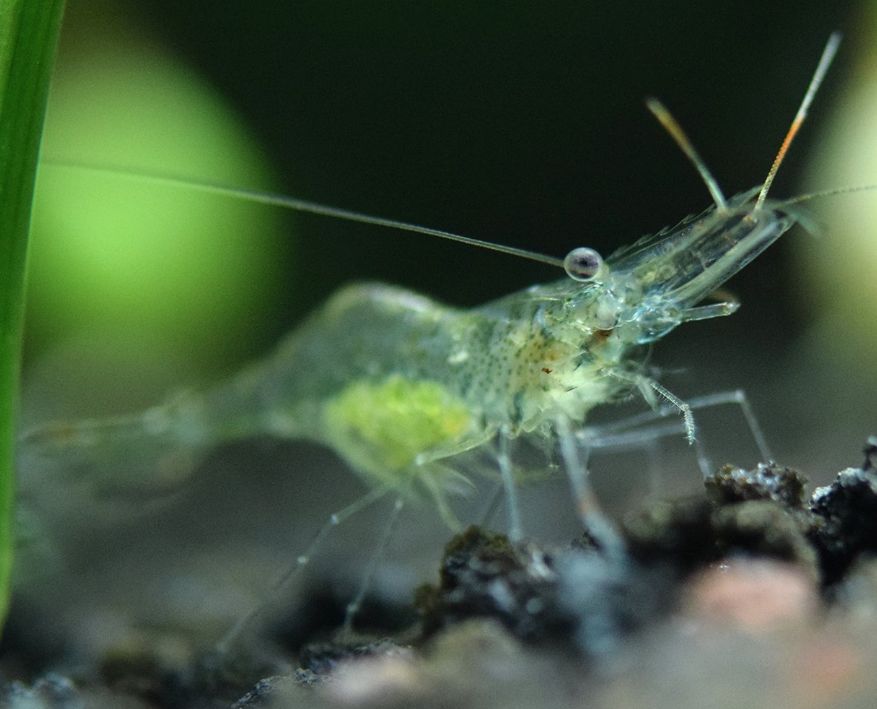In this article, we will explore the popular ghost shrimp, also known as glass shrimp, which are small freshwater crustaceans belonging to the family Palaemonidae. These intriguing creatures are notable for their nearly transparent bodies, making them somewhat elusive in a tank environment, especially when surrounded by abundant aquatic plants. Their various names accurately reflect their appearance, contributing to their charm among aquarists. We will discuss their care requirements, tank setup, and unique behaviors to help you understand why ghost shrimp are a favorite choice for many aquarium enthusiasts.

Contents
Habitat in the wild
Most sources indicate that ghost shrimp are primarily found in freshwater bodies in the southern United States. However, their distribution is actually widespread, with populations documented in North America, South America, Europe, Asia, and Africa. They thrive in various freshwater ecosystems, including rivers, streams, ponds, and marshes, favoring areas with sandy or muddy substrates where they can burrow and create tunnels. These burrows provide protection and serve as retreats in shallow waters or slow-moving currents.
Ghost shrimp often prefer habitats with abundant vegetation, as plants provide both shelter and food sources. They are typically found in regions with rich organic material, which supports their scavenging lifestyle. In nature, they can inhabit both still and flowing waters, but they tend to avoid heavily polluted environments. The presence of decaying leaves and other organic debris in their habitats is vital, as these materials contribute to their diet.
Ghost shrimp are opportunistic feeders with a scavenging nature, sifting through the substrate to consume detritus, organic matter, algae, small invertebrates, and microscopic organisms. Their feeding behavior plays a crucial role in nutrient recycling, contributing to the health of their ecosystems.
Regarding nomenclature, there is inconsistency in the scientific naming of ghost shrimp. Some sources refer to them as Macrobrachium, while others use Palaemonetes. This variation highlights the diversity within the species, as seen on platforms like Wikipedia. Additionally, due to uncontrolled commercial breeding, it’s likely that the ghost shrimp in your tank may be hybrids of various wild populations.

Description
Size and Lifespan
The female ghost shrimp can grow up to 2 inches (5 cm) long, while males typically reach around 1.5 inches (4 cm). Some species may grow slightly larger, reaching up to 3 inches (7.6 cm). The lifespan of ghost shrimp varies depending on factors such as environmental conditions, genetics, and care. On average, they live about 1 to 2 years; however, with optimal care, some individuals can survive up to 2.5 to 3 years.
Molting Behavior
Like other crustaceans, ghost shrimp periodically undergo molting, shedding their exoskeleton to emerge with a soft, vulnerable shell. This process is crucial for growth and is a vulnerable time, so providing proper nutrition and a stress-free environment is essential for their health.
Physical Characteristics
Ghost shrimp have elongated, slender bodies with a segmented exoskeleton that is entirely transparent, allowing visibility of their internal organs. Depending on their diet, their coloration may range from yellowish to orange, beige, or brown. The tail features small spots, and their first four pairs of legs have tiny claws that assist in gathering food from the substrate. Their underdeveloped pincers and elongated antennae help them detect their surroundings and sense potential threats.
Equipped with four pairs of walking legs, ghost shrimp can effectively maneuver and manipulate food particles. Their segmented abdomen ends with a fan-like structure called the uropod, aiding in swimming and balance.
Role in the Aquarium
These shrimp are beneficial in a tank with small fish, as they help maintain cleanliness by consuming leftover food and detritus from the tank bottom. Ghost shrimp are highly social creatures and thrive in groups, which can help reduce stress. However, they are also known to exhibit territorial behaviors, especially during molting periods.
Diet and Coloration
Their diet can significantly influence their coloration, with a nutrient-rich diet leading to more vibrant hues. Ghost shrimp are often used in aquariums to help control algae growth due to their scavenging habits. The process of molting can take several hours, during which the shrimp may hide to avoid predation.
| Characteristic | Description |
|---|---|
| Size | Typically grow to about 1.5 to 2 inches (3.8 to 5 cm) in length. |
| Color | Translucent or semi-transparent with a pale gray or whitish appearance. They can change color based on their environment. |
| Body Structure | Slender and elongated body with a curved abdomen. |
| Antennae | Have long, thin, and highly sensitive antennae. |
| Eyes | Two black bead-like eyes on stalks, located on the head. |
| Appendages | Have five pairs of legs for walking and two pairs of specialized appendages called chelipeds, which are used for feeding and defense. |
| Reproductive Method | Reproduce through sexual reproduction, with females carrying eggs and releasing larvae into the water column. |
| Molting | Undergo molting, shedding their exoskeleton to grow larger. They are vulnerable during this process. |
| Behavior | Generally peaceful and spend most of their time scavenging and foraging for food. They are social and can be kept in groups. |
| Lifespan | Average lifespan is about 1 to 2 years, but with optimal care, some individuals can live up to 2.5 to 3 years. |
| Compatibility | Generally compatible with small, non-aggressive fish species and some other peaceful invertebrates. Care should be taken to avoid aggressive tank mates. |

Care and keeping in a tank
Ghost shrimp are incredibly easy to care for and can adapt to a variety of tank conditions. They are among the few creatures that not only thrive but also breed successfully in smaller tanks. However, it’s ideal to keep them in a larger aquarium, especially one with ample vegetation, where they can establish their own population.
Despite their hardiness, ghost shrimp are sensitive to copper, a common ingredient found in some medications and plant fertilizers. It is crucial to check any products used in the aquarium to ensure they are safe for invertebrates and do not contain copper. Regular monitoring of water parameters and careful selection of tank additives will help maintain a healthy environment for these shrimp.
Filtration
Since most of the ghost shrimps grow not larger than 1.5 inches (4 cm) and they don’t produce much waste in the tank, you should get the filter not for them, but mostly for fishes that live in the tank.
The main thing you have to keep in mind is that juveniles are very small and they easily get sucked in with the flow of the water filter, therefore it’s better not to use an external one. An internal sponge filter without a case will be a perfect solution here. Though if you have a lot of fishes in the tank or if you have a large tank you can use an external filter, since in a large tank the chances that small shrimps get into the water filter are sufficiently lower.
Water parameters
Ghost shrimp thrive in a comfortable temperature range of 18-29°C (65-85°F), with the most preferable temperature being around 23-24°C (75°F). While they can tolerate temperatures below 18°C (65°F), cooler conditions make them more susceptible to various diseases. Higher water temperatures can accelerate breeding and growth rates; however, they can also lead to lower oxygen levels in the water. The upper temperature limit should not exceed 30°C (86°F).
They prefer slightly acidic to neutral water conditions, with an optimal pH range of 6.5 to 7.5. It is crucial to avoid extreme pH levels, as they can adversely affect the shrimp’s health. Ghost shrimp are also adaptable to varying water hardness levels, ideally maintaining a hardness of around 6 to 15 dGH. Adding minerals to the water can support their molting and overall health.
Maintaining excellent water quality is vital for ghost shrimp. Nitrite and ammonia levels should remain at zero, as these substances are particularly harmful to them. Nitrate levels should be kept as low as possible. Regular water changes of at least 30% weekly, along with the presence of tank plants, can help achieve low nitrate levels and ensure a healthy environment.
Tank size
Provide a well-maintained aquarium with a capacity of at least 10 gallons (38 liters) to accommodate ghost shrimp comfortably. Ensure the tank has a secure lid or cover to prevent escapes.
Tank decor
You should create shelters in the tank where the shrimp can hide, such as snags, flower pots, tubes, or thick plants like java moss. Providing these hiding spots is essential for their comfort and well-being.
Ghost shrimp may exhibit aggression toward each other, particularly towards smaller individuals, a behavior that is more pronounced in smaller tanks. Therefore, it is advisable to maintain a ratio of one shrimp per 4 liters of water to minimize stress and territorial disputes.
When purchasing ghost shrimp, pay attention to their coloration and activity level. A healthy ghost shrimp is almost transparent and very active. In contrast, an inert shrimp with a milky coloration likely indicates poor living conditions during transport and may be at risk of dying soon after purchase.
Tank mates
Size allows it to be a good tank mate for most of tank fishes. They don’t interact with tank fishes in any way, but if you keep shrimps with large and aggressive fishes (for instance, Oscar fish) the ghost shrimps will be totally eliminated.
Here’s a table outlining some fish species known to be potential predators of ghost shrimp:
| Predator Fish Species | Description |
|---|---|
| Bettas | Siamese fighting fish, known to be aggressive towards smaller shrimp. |
| Angelfish | Larger angelfish may view ghost shrimp as prey and hunt them. |
| Gouramis | Some gourami species, such as dwarf gouramis, may prey on ghost shrimp. |
| Cichlids | Certain cichlid species can be aggressive and hunt smaller shrimp. |
| Barbs | Certain barb species may nip or attack ghost shrimp. |
| Larger Tetras | Larger tetras, like serpae tetras or Buenos Aires tetras, may eat smaller ghost shrimp. |
| Rainbowfish | Some rainbowfish species may prey on smaller shrimp. |
| Larger Livebearers | Larger livebearer species, such as mollies or swordtails, can sometimes eat ghost shrimp. |
| Loaches | Some loach species, especially larger ones, may prey on ghost shrimp. |
| Some Catfish Species | Certain catfish species, particularly larger ones, may hunt and eat ghost shrimp. |
Look for peaceful, non-aggressive fish that won’t view ghost shrimp as food. Good options include small tetras (such as neon tetras, ember tetras, or harlequin rasboras), guppies, endlers, dwarf rasboras, and some smaller species of livebearers. Consider the smaller species of Corydoras catfish, such as Pygmy Corydoras or Panda Corydoras. They are peaceful bottom-dwelling fish that won’t harm the shrimp and can add activity and interest to the aquarium.
Although, if it comes to to small shrimps the larger ones may be aggressive to them, especially if it’s not enough food for them. Here is the story of one of our readers:
About two month ago I bought ghost shrimps. They were transparent, about 0.5 inches large. I put them into the tank with soft water together with red crystal shrimps. The shrimps were ok, they grew fast, eat all the food, especially bloodworm. But when one day there was no bloodworm for them, they attacked red crystal and only very few of them survived. As for the shrimps, they became larger and stronger and even fed on some of their weaker relatives.
Now these shrimps are about 2 inches long, have small pincers, like hiding in the tank plants and moss, they come out to get their food and very seldom to swim around the tank. I also saw one of the female carrying eggs. They were about 30 eggs of greenish color.
However, considering all the above mentioned, still it is important to choose small sized and non predatory tank mates. Small size and helplessness make the ghost shrimp an easy prey for large fishes. Some of them can even swallow the whole shrimp.

Gender differences: male vs female
Ghost shrimp males and females can be easily distinguished by several features. Firstly, females typically have a greenish saddle on their back and may carry eggs under their abdomen, which appear as shiny green spots. Secondly, females have a noticeable bulge on their back and a more pronounced curved shape compared to males.
Another distinctive feature is size: females are generally larger than males. An adult female can reach about 2 inches in length, while males are often smaller, sometimes measuring less than 1.5 inches.

Feeding
Feeding ghost shrimp is quite easy, as they constantly search for food on the tank bottom. They are excellent scavengers, readily consuming biofilm, algae, and detritus that accumulate in the aquarium, which helps provide a balanced diet.
They eagerly eat leftovers from fish food and enjoy bloodworms and tubifex, although only adult shrimp can swallow whole bloodworms. Freezing bloodworms often causes them to break into smaller pieces, making them accessible for juveniles as well. Ghost shrimp can also eat small live or frozen foods, such as brine shrimp and daphnia, which are protein-rich options that can be offered occasionally for dietary variety.
In addition to natural food sources, specialized food is beneficial. High-quality sinking shrimp pellets designed for freshwater crustaceans serve as a staple food, containing a balanced mix of proteins, vitamins, and minerals. Algae wafers or sinking pellets made for herbivorous fish are also good additions, as ghost shrimp will consume the vegetable matter present in these wafers.
It’s important to ensure that the food reaches the tank bottom and is not consumed by fish in the mid-water layer, as this ensures the shrimp have access to their meals.
Breeding
Breeding ghost shrimp is not particularly difficult; all that’s needed is to have males and females together in a tank. The challenge lies in feeding the juveniles to ensure their growth, as they are very small and cannot eat adult food, which often leads to starvation and high mortality rates among them.
To maximize the survival of larvae, it’s advisable to separate the female with eggs into a different tank once you notice her carrying them. This is easy to spot due to their semi-transparent bodies, revealing small greenish eggs under her abdomen, which she will carry for several weeks. The female may also display more aggressive behavior toward other shrimp during this time.
Once the female is in the separate tank, you must prepare to feed the larvae. In their initial days, the larvae do not resemble shrimp at all; they are tiny and swim freely in the water without legs, using appendages at the bottom of their tails for propulsion. During this stage, they feed on infusoria and zooplankton. After a few days, they will shed their skin and begin to resemble tiny ghost shrimp.
To support the juveniles, provide infusoria or other small-sized food. It’s also beneficial to place fallen leaves on the tank bottom, as they will rot and produce microorganisms that serve as additional food. Including java moss in the tank is another great idea, as it hosts a variety of microorganisms. After the larvae molt, you can start feeding them artificial food specifically formulated for juveniles. Additionally, keeping the water clean and stable during this time is crucial, as poor water quality can further stress the young shrimp.
It’s important to note that ghost shrimp can produce multiple batches of eggs throughout the year, leading to potential overpopulation if not managed carefully. Regular monitoring of the shrimp population and water parameters can help maintain a healthy environment for both adults and juveniles.
Sources: